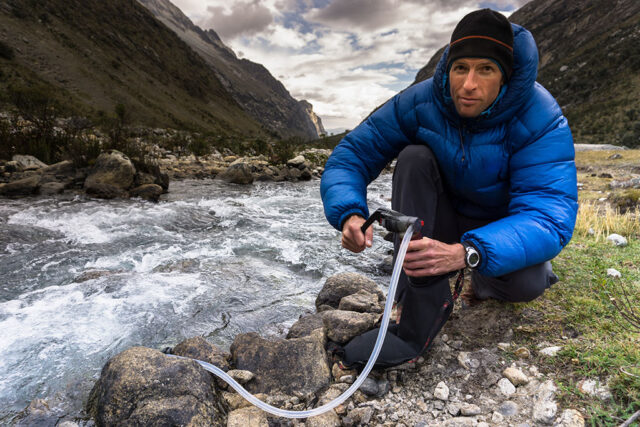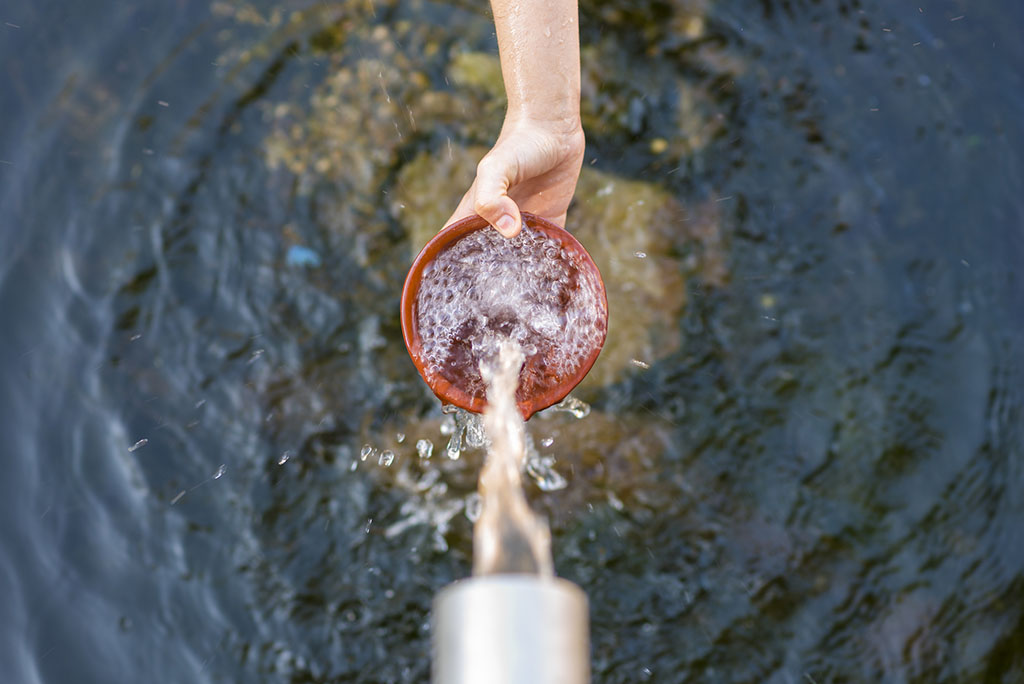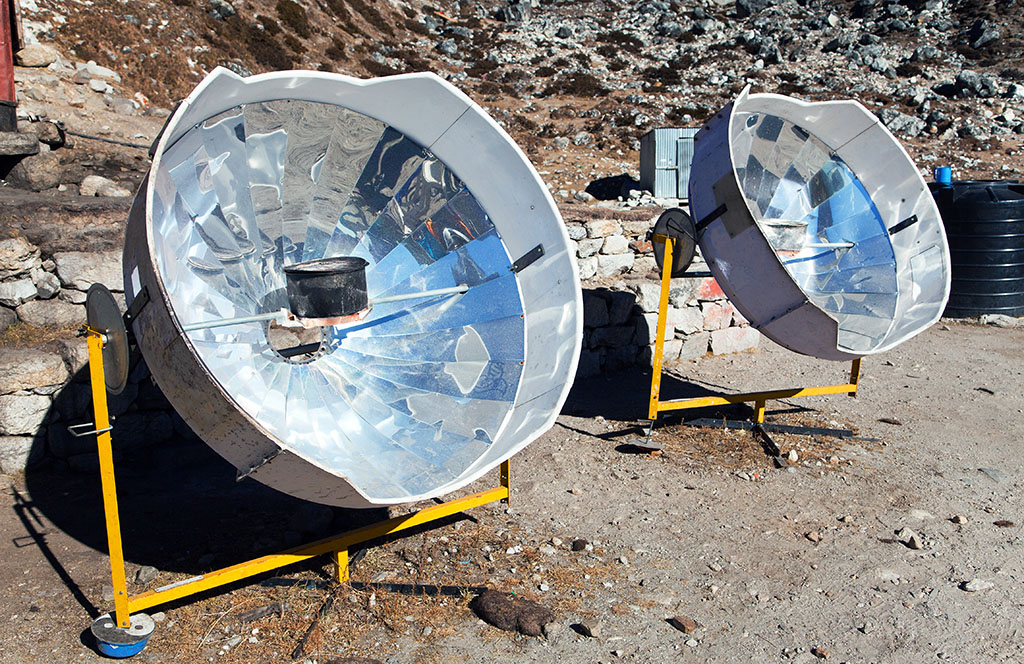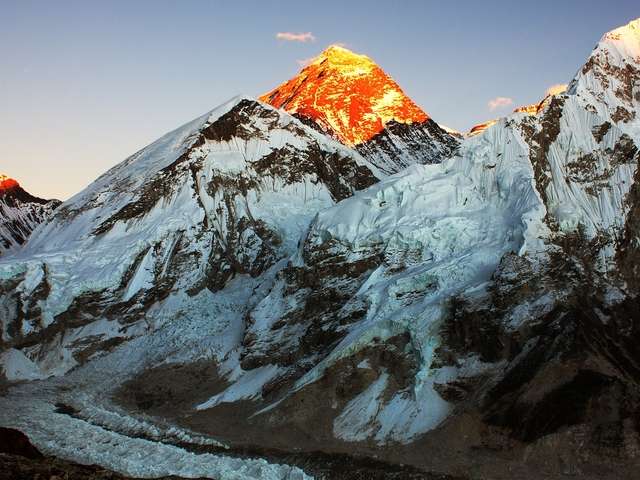Hydration in the Himalayas – A Complete Guide To Water Purification While Trekking
by Brinley ClarkApril 19, 2021

Access to clean, potable water along the trail isn’t something to stress about while trekking in Nepal. However, as with all high altitude treks (anything above 5000 ft), it’s important to hydrate more than you would at lower elevations. The recommended intake while trekking is 3-4 liters per day. In the past, many trekkers on the way to Everest Base Camp drank from plastic water bottles that negatively impacted the local environment. As these were banned as of January 2020, we will review the following options to show you what the best ways to stay hydrated are while trekking to Everest Base Camp!
Boiling Water
According to the Centers for Disease Control and Prevention (CDC), proper boiling of untreated water is the most effective technique to purify water. It’s important to know that below 2000m you need to boil it for a minute, however, above that altitude you need to boil it for 3 minutes. The majority of our treks start at an altitude well above that 2000m mark so if you don’t know your altitude err on the side of caution and boil it for at least 3 minutes. Boiled water is also what the teahouses serve for around 1USD a cup and the cups are fairly small. Though the water on tap and through hoses in the village is free, it is not potable unless you plan to treat it yourself.
Filtration Systems
Reusable water bottles are a must! And if you buy one with a filter straw, even better! Filter straws filter out 99% of waterborne bacteria, microplastics and parasites. A single straw can filter all the water for an individual for 3 years- so it doubles as a worthwhile investment that will serve you well past your Everest Base Camp adventure. If you are drinking river water this filtration straw will do just fine! Most filtration systems will filter out anything greater than 5 microns which includes protozoa such as Giardia but are ineffective against smaller bacteria such as E. Coli. We suggest complementing any filtration system with either iodine or chlorine based tablets.

Tablets (Chlorine or Iodine)
Chlorine or iodine based tablets are commonly taken along the trail for water purification. The water along the trail is generally good quality in that it’s clean and cold but you may still want to filter the water before drinking it. After you filter the water, put the tablet and wait 30 minutes for the tablet to kill off all the contaminants. Then take a sip! The water is ready to drink. Take note that the chemical purification can leave a taste in your mouth that’s unpleasant for some. Because hydration is extremely important to trekking consider bringing flavor packets to cover the taste if there’s the possibility of it bothering you. You can also use electrolyte packets to cover the taste, which are a great way to replenish the salts you lose from sweating. We recommend drinking one regular bottle of water to every drink with added minerals. There are some long term concerns about taking chemical tablets, but on treks that only last a few weeks there’s no reason to be concerned.
UV Light/ Steripen
For those that are hard-set against chemically treating their water, another option is to treat it with blasts of UV light using a steripen. This easy to use, 90 second (per liter) option removes all the nasty protozoa, bacteria, and viruses in the water by destroying their DNA. It is a lightweight option that is an easy go to for many backpackers, however you do need to make sure that you have a contingency plan for the batteries. Certain types of batteries work better in the cold than others. Either way, try keeping the batteries close to your body when they are not in use to keep them warm. You will be able to recharge them for a cost along the trail. Otherwise, plan on bringing extra batteries or a power bank so you can recharge it yourself.
Our Recommendation: The easiest way to treat water is either with chlorine/iodine tablets or to use a steri-pen. The tea houses will give you free water but it needs to be treated. You can find water every 2 or 3 hours along the trail and fill up your bottles. If your unsure just ask your guide.
Lastly, we have a few extra hydration tips for you! A great way to hydrate at the teahouses is by ordering a lot of tea and soup (garlic soup is believed to help with acclimation anyway, win-win)! Make sure to keep track of how many diuretics you’ve consumed as they will require you to compensate by drinking more water. This means, if you drink caffeinated tea, coffee or are taking Diamox, drink extra water. We also recommend avoiding alcohol (at least on the way up), as it can slow your acclimation process and dehydrate you significantly. You should also bring two water bottles with you so while one is purifying with a tablet, you can be drinking the other before alternating. Nalgene water bottles are a good option as they retain heat and don’t burn you when you pour in boiling water. Our last helpful tip, fill up your water bottle at night with boiling water to put in your sleeping bag to keep your feet warm!

Annapurna Region Water Availability
While trekking the Annapurna region is very similar to Everest Base Camp there are a few differences. No plastic water bottles are sold but there are safe water drinking stations that are available in the most popular trekking areas.
It may be a bit stressful to have to worry about clean water if you are used to getting it straight out of the tap, however it will be completely worth it to trek the Himalayas! They truly do live up to their hype. At Adventurehero, we would love to help you make your dreams a reality. If you have any specific questions or concerns don’t hesitate to email us at info@adventurehero.com. Please like, comment, or subscribe to let us know how we’re doing.

















